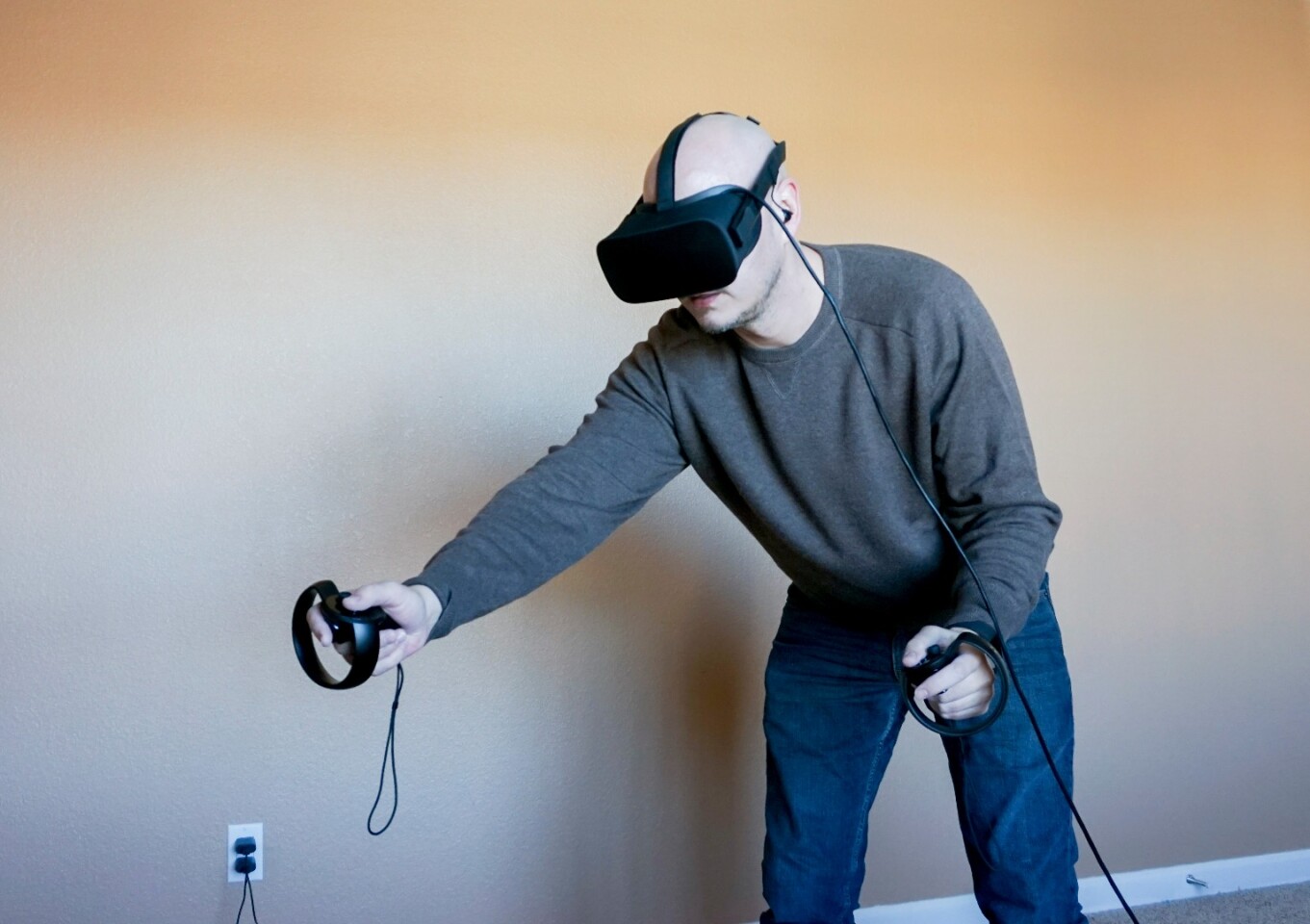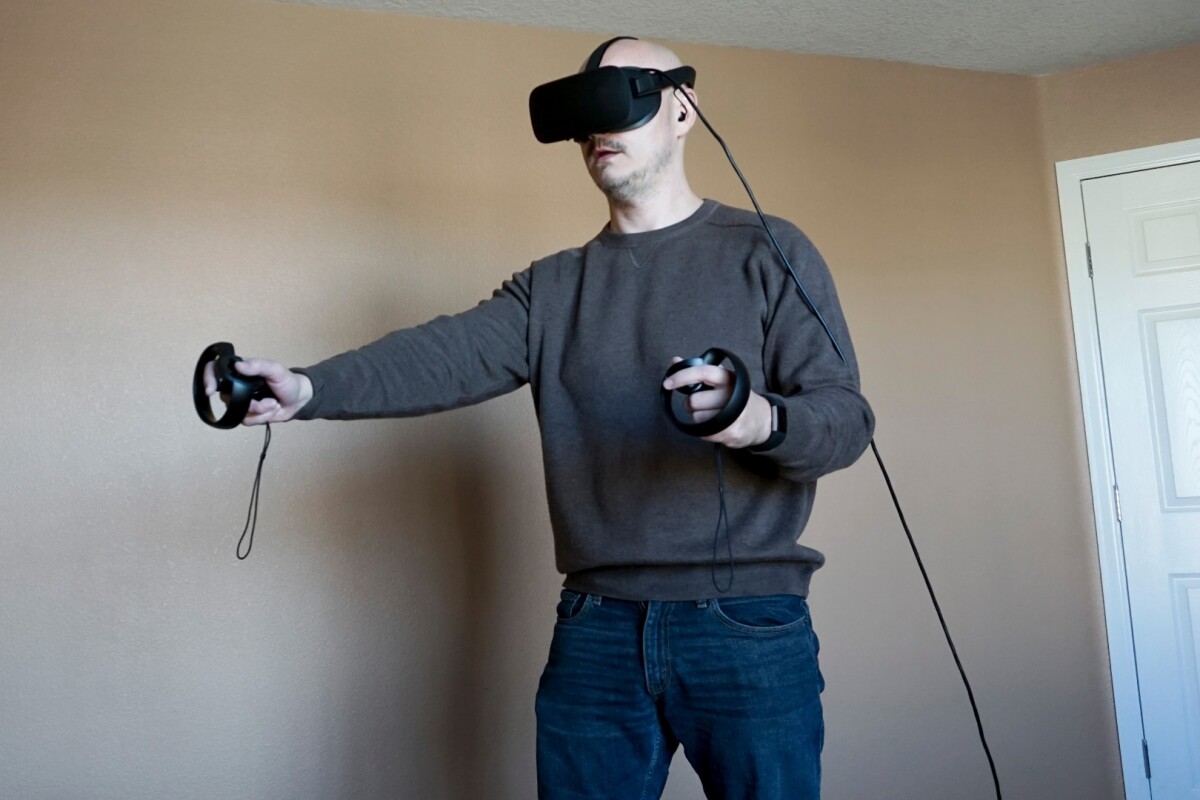Until early October, Oculus hadn't announced any plans to match the HTC Vive's mesmerizing room-scale mode of virtual reality, where there's no "right" way to face and your mobility is only limited by the size of your physical space. Today Oculus Rift owners finally have that option, along with 360° tracking. We took the setup for a spin.
When you initially set up the Oculus Rift, you'll find one sensor in the box that tracks your movement – while seated – in 180°. If you buy the Oculus Touch motion controllers, you'll have a second sensor that you position next to the first, providing more accurate 180° tracking for standing games and experiences.
The HTC Vive, however, garnered an abundance of attention largely because of its 360° tracking, courtesy of two mounted base stations. Facebook's Oculus needed something similar to catch up.

Enter the optional third sensor. For US$79, Oculus will ship Rift owners the missing piece to unlock full 360° tracking on the Rift. It adds some wires that the Vive doesn't – all three Rift sensors use PC-connected USB cables, while the Vive needs zero – but otherwise it's a functional room-scale setup.
There are, however, limits that you don't run into with the Vive.
We've been using the Vive in a 12 x 9 ft. space, and haven't had a single tracking error from April to today. With the Rift's three-sensor setup in the same playing space, though, a 12 x 9 ft. area produced some dead zones where Oculus Touch tracking went wonky. Things like hands floating several feet in front of you or juddering while you're holding the controllers still. Those trouble spots around the edges were positively PlayStation VR-esque.
Shrinking that down to a 8 x 9 ft. space mostly solved the problem, though even there, if I walked into one corner with my back turned just so, the hand-tracking still lost some accuracy.

The 360° tracking is terrific if you stay within relatively small confines. With standing VR games, which is essentially every Oculus Touch launch title, it's been pitch-perfect. And while those games don't encourage you to turn away from "the front," that third sensor tracks perfectly if you decide to spin all the way around to fully investigate your surroundings.
But in games like The Gallery, Episode 1: Call of the Starseed, a Vive port that allows for room-scale and encourages movement in all directions, you'll need to either a) make your playing space smaller than you could with the Vive or b) deal with some danger zones where Oculus-Touch-tracking goes haywire. Or possibly c) both.
Be sure to keep things in perspective: While Sony's PSVR has inaccurate controller-tracking while looking straight at the sensor, it's only edges and corners in larger playing spaces where the Rift's cameras can get troublesome.

Oculus' Guardian boundary system does its job, popping up walls when you get near the edge of your playing space, triggering your don't-smack-into-things instinct. I like that it lets you trace irregularities in the edges, parts of the room that may jut in and out, rather than only forming a perfect rectangle.
If you're a Rift buyer who wants 360° tracking, the third sensor is worth $79. We're a little disappointed that its room-scale tracking doesn't match the Vive's, but if you don't mind playing in a more confined section of your room, Rift room-scale can be a suitable-enough alternative.
For more on VR and room-scale, you can revisit our individual reviews of the Oculus Rift and HTC Vive, along with our latest comparison of the two PC-based headsets.
Product page: Oculus







